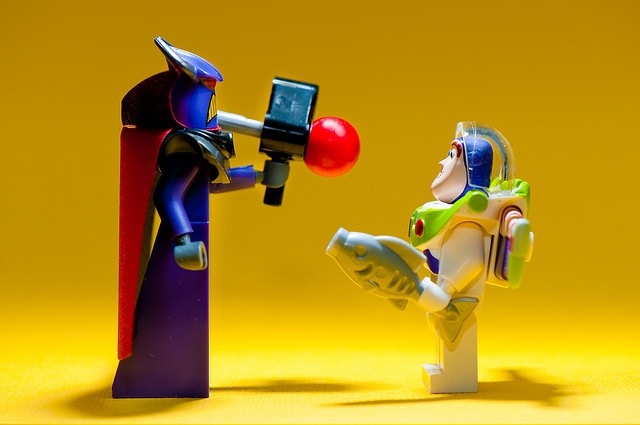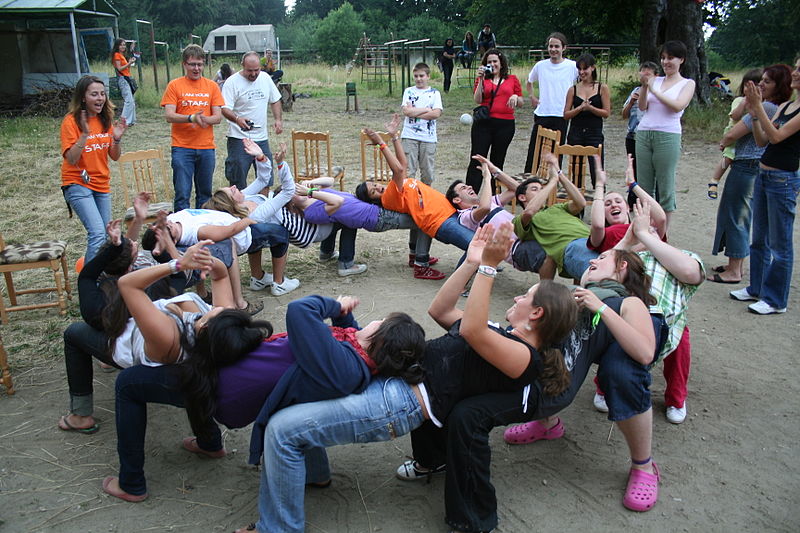Archive for the ‘Level 5 Courage’ Category
Retreating From Activity To Progress
 Every day is a meeting-to-meeting sprint with no time for some of the favorite fundamentals like the bathroom and food. Though crazy, it’s the norm and no longer considered crazy. But it is crazy. When you’re too busy to answer emails that’s one thing, but when you’re too busy to realize answering email isn’t progress, that’s a problem.
Every day is a meeting-to-meeting sprint with no time for some of the favorite fundamentals like the bathroom and food. Though crazy, it’s the norm and no longer considered crazy. But it is crazy. When you’re too busy to answer emails that’s one thing, but when you’re too busy to realize answering email isn’t progress, that’s a problem.
Our in-boxes are full; our plates are full; our calendars are full. But our souls are empty.
You’re clear on what must get done over the next 48 hours, but the pace is too fast to know why the work is important in the first place. (One of the fastest way to complete a task is to deem it unimportant and don’t do it – all of the done with none of the work.) But it’s worse. It’s too fast to do the work no one is asking you to do, and it’s too fast to do the work you were born to do.
We have confused activity with progress; and with all the activity, we’ve forgotten what it feels like to think. We need a retreat.
The perfect retreat eliminates distractions and gives people time to think. After a nice Sunday flight into Boston, it’s a calm two hour coach ride to rural New Hampshire. (Done right, a coach is soothing.) After pickup it’s a fifteen minute drive to a remote trail head. With a pack on your back, it’s a five minute walk to a big, remote cabin. No cell service, no power, no interruptions.
As you enter the cabin, you unload all your electronics into bin (Yes, your smart phone goes in the bin.) which is locked away for the remainder of the retreat. You race to get the best bunk, drop your gear, and share a meal with your fellow over achievers. (Y es, the non-disclosures are signed so you can actually talk to each other.)
The first day is all about recognizing the discomfort that comes with no distractions and your natural tendency to create distraction to sooth your discomfort. The objective is to help you remember what if feels like to have more than 30 seconds of uninterrupted time. Then, once you remember, it’s time to actually think.
There are no video conferencing capabilities (or electricity) in the cabin, so all work is done the old-fashioned way – face-to-face. The objective is to help you remember the depth, complexity, and meaning that come when working with actual faces. Yes, there’s good facilitated discussion, but the topics aren’t as important as remembering how to share and trust.
There is ritualistic work of cooking, cleaning, splitting the wood, and stoking the fire. The objective is to remember what it feels like to connect the mind to the body and to connect with others. And, there’s a group hike every day to remember what it feels like to be grounded in the natural world. (Sometimes we forget the business world is actually part of the natural world.)
After the rituals and hikes have done their magic, the right discussions start to emerge, and deep contemplation dances with deep conversation. Though there’s a formal agenda, no matter. With the group’s awaking, the right agenda emerges.
At the end of the retreat, there’s immense sadness. This is a sign of importance and deep learning. And after the hugs and tears, there’s a spontaneous commitment to do it next year. With eyes dried, it’s off the bus station and then to the airport.
You don’t have to wait for the perfect retreat to start your journey. Start your practice by carving out an hour a day and set a recurring meeting with yourself and turn off your email. And start by asking yourself why. Those two tricks will set you on your way.
And if you’re interested in a real retreat, let me know.
Look Inside, Take New Action, Speak New Ideas.
 There’s a lot buzz around reinvention and innovation. There are countless articles on tools and best practices; many books on the best organizational structure, and plenty on roles and responsibilities. There’s so much stuff that it’s tough to define what’s missing, even when what’s missing is the most important part. Whether its creativity, innovation, or doing new, the most important and missing element is your behavior.
There’s a lot buzz around reinvention and innovation. There are countless articles on tools and best practices; many books on the best organizational structure, and plenty on roles and responsibilities. There’s so much stuff that it’s tough to define what’s missing, even when what’s missing is the most important part. Whether its creativity, innovation, or doing new, the most important and missing element is your behavior.
Two simple rules to live by: 1) Look inside. 2) Then, change your behavior.
To improve innovation, people typically look to nouns for the answers – meeting rooms, work spaces, bean bag chairs, and tools, tools, tools. But the answer isn’t nouns, the answer is verbs. Verbs are action words, things you do, behaviors. And there are two behaviors that make the difference: 1.) Take new action. 2) Speak new ideas.
To take new action, you’ve got to be perceptive, perceptive about what’s blocking you from taking new action. The biggest blocker of new action is anxiety, and you must learn what anxiety feels like. Thought the brain makes anxiety, it’s easiest to perceive anxiety in the body. For me, anxiety manifests as a cold sinking feeling in my chest. When I recognize the coldness, I know I’m anxious. Your task is to figure out your anxiety’s telltale heart.
To learn what anxiety feels like, you’ve got to slow down enough to actually feel. The easiest way for overbooked high performers to make time to slow down is to schedule a recurring meeting with yourself. Schedule a recurring 15 minute meeting (Daily is best.) in a quiet place. No laptop, no cell phone, no paper, no pencil, no headphones – just you and quiet sitting together. Do this for a week and you’ll learn what anxiety feels like.
To take new action, you’ve got to be receptive, receptive to the anxiety. You’ll naturally judge anxiety as bad, but that’s got to change. Anxiety isn’t bad, it’s just unpleasant. And in this case, anxiety is an indicator of importance. When you block yourself from taking an important action, you create anxiety. So when you feel anxiety, be receptive – it’s your body telling you the yet-to-be-taken action is important.
After receptive, it’s time to be introspective. Look inside, turn toward your anxiety, and understand why the task is important. Typically it’s important because it threatens the status quo. Maybe it would dismantle your business model, or maybe it will unglue the foundation of your company, or maybe something smaller yet threatening. Once you understand its importance, it’s time to use the importance as the forcing function to start the task first thing tomorrow morning.
The second magic behavior is to speak new ideas. To speak new ideas, you’ve got to be perceptive to the reason you self censor. Before you can un-censor, you’ve got to be aware you self censor. It’s time to get in touch with your unsaid ideas. Now that you no longer need the 15 minute meeting for taking new action, change the agenda to speaking new ideas. Again, no laptop, cell phone, and headphones, but this time it’s you and quiet figuring out what if feels like right before you self-censor.
In your meeting, remember back to a brainstorming session when you had a crazy idea, but decided to bury it. Get in touch with what your body felt like as you stopped yourself from speaking your crazy idea. That’s the feeling you want to be aware of because it’s a leading indicator of your self censoring behavior.
Next, it’s time to be receptive, receptive to the idea that just as you choose to self censor, you can choose to stop your self censorship, and receptive to the idea that there’s a deep reason for your behavior.
Now, it’s on to introspective. When you have a crazy idea, why do you keep your mouth shut? Turn toward the behavior and you may see you self censor because you don’t want to be judged. If you utter a crazy idea, you may be afraid you’ll be judged as crazy or incompetent. Likely, you’re afraid saying your idea out loud will change something – what other people think of you.
There are a couple important notions to help you battle your fear of judgment. First, you are not your ideas. You can have wild ideas and be highly competent, highly valued, and a good person. Second, other people’s judgment is about them, not you. They are threatened by your idea, and instead of looking inside, they protect themselves by trying to knock you down.
There’s a lot of nuance and complexity around creativity and innovation, but it doesn’t have to be that way. Really, it comes down to four things: own your behavior, look inside, take new action, and speak new ideas. It’s that simple.
The Half-Life of Our Maps
 The early explorers had maps, but they were wrong – sea monsters, missing continents, and the home country at the center. Wrong, yes, but the best maps of their day. The early maps weren’t right because the territory was new, and you can expect the same today. When you work in new territory, your maps are wrong.
The early explorers had maps, but they were wrong – sea monsters, missing continents, and the home country at the center. Wrong, yes, but the best maps of their day. The early maps weren’t right because the territory was new, and you can expect the same today. When you work in new territory, your maps are wrong.
As the explorers’ adventures radiated further from home, they learned and their maps improved. But still, the maps were best close to home and diverged at the fringes. And over the centuries the radius of rightness grew and the maps converged on the territory. And with today’s GPS technology, maps are dead on. The system worked – a complete map of everything.
Today you have your maps of your business environment and the underlying fundementals that ground them. Like the explorers you built them over time and checked them along the way. They’re not perfect (more right close to home) but they’re good. You mapped the rocks, depths, and tides around the trade routes and you stay the course because the routes have delivered profits and they’re safe. You can sail them in your sleep, and sometimes you do.
But there’s a fundamental difference between the explorers’ maps and yours – their territory, the physical territory, never changed, but yours is in constant flux. The business trade winds shift as new technologies develop; the size of continents change as developing countries develop; and new rocks grow from the sea floor as competitors up their game. Just when your maps match the territory, the territory changes around you and diverges from your maps, and your maps become old. The problem is the maps don’t look different. Yes, they’re still the same maps that guided you safely along your journey, but they no longer will keep you safely off the rocks and out of the Doldrums.
But as a new age explorer there’s hope. With a healthy skepticism of your maps, frequently climb the mast and from the crow’s nest scan the horizon for faint signs of trouble. Like a thunder storm just below the horizon, you may not hear trouble coming, but there’ll be dull telltale flashes that flicker in your eyepiece. Not all the crew will see them, or want to see them, or want to believe you saw them, so be prepared when your report goes unheeded and your ship sales into the eye of the storm.
Weak signals are troubling for several reasons. They’re infrequent and unpredictable which makes them hard to chart, and they’re weak so they’re tough to hear and interpret. But worst of all is their growth curve. Weak signals stay weak for a long time until they don’t, and when they grow, they grow quickly. A storm just over the horizon gives weak signals right up until you sail into gale force winds strong enough to capsize the largest ships.
Maps are wrong when the territory is new, and get more right as you learn; but as the territory changes and your learning doesn’t, maps devolve back to their natural wrongness. But, still, they’re helpful. And they’re more helpful when you remember they have a natural half-life.
My grandfather was in the Navy in World War II, though he could never bring himself to talk about it. However, there was one thing he told me, a simple saying he said kept him safe:
Red skies at night, sailor’s delight; red skies in morninng, sailor takes warning.
I think he knew the importance of staying aware of the changing territory.
Decide To Tackle The Impossible
 Doing the impossible doesn’t take a long time, starting does. More precisely, what takes a long time is getting ready to start. Getting ready is the gating item. So what’s in the way?
Doing the impossible doesn’t take a long time, starting does. More precisely, what takes a long time is getting ready to start. Getting ready is the gating item. So what’s in the way?
The big deal about starting is other people will see you do it and they’ll judge you. Your brain tells stories about how people will think you’re silly or incompetent for trying the outrageous. It takes a long time to build the courage to start. But where starting is scary, getting ready is safe and comfortable. Getting ready is done in the head – it’s a private process. And because you do it in your head, you can do it without being judged, and you can do it for as long as you like. And you can take comfort in getting ready because you rationalize you’re advancing the ball with your thinking. (Hey, at least you’re thinking about it.) But the real reason for staying in the getting ready domain is starting the fear around being judged for starting.
After you finally mustered the courage to start, you’ll get welcomed with all sorts of well-intentioned, ill-informed criticism. The first one – We tried that before, and it didn’t work. Thing is, it was so long ago no one remembers what was actually tried. Also, no one remembers how many approaches were tried, and even fewer know why it didn’t work. But, everyone’s adamant it won’t work because it didn’t work. Your response – That was a long time ago, and things have changed since then. There are new technologies to try, new materials that may work, new experimental methods, and new analytical methods to inform the work.
Now that you dismissed the we-already-tried-that’s, the resource police will show up at your door. They’ll say – That’s a huge project and it will consume all our resources. You can’t do that. Your response – Well, I’m not eating the whole enchilada, I only taking the right first bite. And for that, I don’t need any extra resources. You see, my friends and I really want to do this and we pooled our resources and narrowly defined the first bite. So, as far as resources, I’m all set.
Now the alignment officers will find you. They’ll say – Your off-topic mission impossible will confuse and distract our organization and we can’t have that. You know there’s no place for passion and excitement around here. Can you imagine engineers running around doing things that could disrupt our decrepit business model? We’ll no longer have control, and we don’t like that. Please stop. Your response – Let’s set up a meeting with the CEO who’s on the hook to create new businesses, and you can deliver that message face-to-face. You want me to set up the meeting?
Lastly, the don’t-rock-the-boaters will nip at your heels. They’ll say – Things are going pretty well. Did you hear we’re laying off fewer people this quarter? And, we’re losing less money this quarter. Things are looking up. And here you are trying something new, and scaring everyone half to death. You’ve got to stop that nonsense. Your response – Though it may be scary, I have a hunch this crazy stuff could create a whole new business and help secure the company’s future. And I have kids going to college in a couple years, and the company’s future is important to me.
When doing the impossible, the technical part is the easy part. Once you decide to try, what you thought impossible comes quickly. What’s difficult is the people part. Doing the impossible is unpredictable, and it cuts across grain of our culture of predictability. For years it’s been well defined projects with guaranteed profits and completion dates etched in stone. And after years of predictability injections people become the antibodies that reject the very work the company needs – the work that delivers the impossible.
No kidding – once you start the impossible, your organization will make it difficult for you. But, that’s nothing compared to the difficulty of getting ready because in that phase, you must overcome the most powerful, sly, dangerous critic of all – yourself.
Gifts Are For The Giver
 I’ve read emails from engineering students telling me I whipped them into a fervor over engineering.
I’ve read emails from engineering students telling me I whipped them into a fervor over engineering.
I’ve received notes from engineering leaders that, based on a single line of a post, reinvented the cost signature of their products.
I’ve been sent messages from folks who were stuck in a rut, and after reading my post, were able to work through their self-imposed constraints.
My inbox has let me know a reader, after thinking about my thinking, tried something that truly scared them.
They all thanked me for what I gave them, but, really, I want to thank them for what they gave me.
They listened; they thought; they changed their behavior. There can be no bigger gift.
I know not everyone celebrates my holiday, but, nonetheless, I want to share it with you.
Merry Christmas, and thanks for your gifts.
Weak Signals And The Radical Fringe
We strive to get everyone on the same page, to align the crew in a shared direction. The thinking goes – If we’re all pulling in the same direction, we’ll get there faster and more efficiently. Yes, the destination will come sooner, but what if it’s not there when we get there?
There’s implicit permanence to our go-forward travel plans. We look out three years and plan our destination as if today’s rules and fundamentals will still apply. We think – That imaginary tropical vacation spot will be beautiful in three years because it looks beautiful through the kalidascope of today’s success. But as the recent natural disasters have taught us, whole islands can be destroyed in an instant. But still, the impermenance of today’s tried-and-true business models is lost on us, and we see the unknowable future as statically as the unchangeable map of the continents.
Thing is, all around us there are weak indications the fundamental tradewinds have started to shift – weak signals of impermenance that may invalidate today’s course heading. But weak signals are difficult to hear – the white noise of yesterday’s success drowns out the forward-looking weak signals. And more problematic, once heard, weak signals are easily dismissed because their song threatens the successful status quo.
You feel weak signals in your chest. It could be a weak signal when your experience tells you things should go one way and they actually go another. Martin Zwilling (Forbes) has some great examples. (Thanks to Deb Mills-Scofield [@dscofield] for retweeting the article.)
100% alignment reduces adaptability because it deadens us to weak signals, and that’s a problem in these times of great impermanence. To counter the negative elements of alignment, there must be a balancing injection of healthy misalignment. This is an important and thankless task falls on the shoulders of a special breed – the radical fringe. They’re the folks smart enough to knit disjointed whispers into coherent ideas that could unravel everything and brave enough to test them.
Disruptive movements and revolutions build momentum quietly and slowly. But if you can recognize them early, there’s a chance you can get into position to ride their tsunami instead of being ambushed and scuttled by it. But you’ve got to listen closely because these young movements are stealthy and all they leave in their wake are weak signals.
Choose Yourself
 We’ve been conditioned to ask for direction; to ask for a plan; and ask for permission. But those ways no longer apply. Today that old behavior puts you at the front of the peloton in the great race to the bottom.
We’ve been conditioned to ask for direction; to ask for a plan; and ask for permission. But those ways no longer apply. Today that old behavior puts you at the front of the peloton in the great race to the bottom.
The old ways are gone.
Today’s new ways: propose a direction (better yet, test one out on a small scale); create and present a radical plan of your own (or better, on the smallest of scales test the novel aspects and present your learning); and demonstrate you deserve permission by initiating activity on something that will obsolete the very thing responsible for your success.
People that wait for someone to give them direction are now a commodity, and with commodities it always ends in the death spiral of low cost providers putting each other out of business. As businesses are waist deep in proposals to double-down on what hasn’t worked and are choking on their flattened S-curves, there’s a huge opportunity for people that have the courage to try new things on their own. Today, if you initiate you’ll differentiate.
[This is where you say to yourself – I’ve already got too much on my plate, and I don’t have the time or budget to do more (and unsanctioned) work. And this is where I tell you your old job is already gone, and you might as well try something innovative. It’s time to grab the defibrillator and jolt your company out of its flatline. ]
It’s time to respect your gut and run a low cost, micro-experiment to test your laughable idea. (And because you’ll keep the cost low, no one will know when it doesn’t go as you thought. [They never do.]) It’s time for an underground meeting with your trusted band of dissidents to plan and run your pico-experiment that could turn your industry upside down. It’s time to channel your inner kindergartener and micro-test the impossible.
It’s time to choose yourself.
Own Your Happiness
 Own your ideas, not the drama.
Own your ideas, not the drama.
Own your words, not the gossip.
Own your vision, not the dogma.
Own your effort, not the heckling.
Own your vacation, not the email.
Own your behavior, not the strife.
Own your talent, not the cynicism.
Own your deeds, not the rhetoric.
Own your caring, not the criticism.
Own your sincerity, not the hot air.
Own your actions, not the response.
Own your insights, not the rejection.
Own your originality, not the critique.
Own your passion, not the nay saying.
Own your loneliness, not the back story.
Own your health, not the irrational workload.
Own your thinking, not the misunderstanding.
Own your stress level, not the arbitrary due date.
Own your happiness.
Build A Legacy Of Trust
 We set visions, define idealized future states, define metrics, and create tools and processes to realize them. It’s all knit together, the puzzle pieces fight tightly, and it leaves out the most important part – people and their behavior.
We set visions, define idealized future states, define metrics, and create tools and processes to realize them. It’s all knit together, the puzzle pieces fight tightly, and it leaves out the most important part – people and their behavior.
Metrics represent the all-important output of our tools and processes, and we’re so fascinated by metrics because customers pay for outputs they stand for. The output of the product development process is the recipe for the product, and the output of the manufacturing process is product itself. We’re muscle bound with metrics because these outputs are vitally important to profitability. Here’s a rule: the processes and tools we deem most important have the most metrics.
Metrics measure outputs, and managing with output metrics is like driving a car while looking in the rear view mirror. But that’s what we do. But what about managing the inputs?
The inputs to tools are people and their behaviors. People use tools, and how they use them – their behavior – governs the goodness of the output. Sometimes we behave otherwise, but how people use the tools (the inputs) is more important than the tools. But don’t confuse the sequence of steps with behaviors.
All the steps can be intricately defined without capturing the desired behavior. 1.) Load the solid model – see Appendix C. 2.) Set up the boundary conditions using the complicated flow chart in Appendix D. 3.) Run the analysis. 4.) Interpret the results. (Which is far too complicated to capture even in the most complicated appendix.) But the steps don’t define the desired behavior. What’s the desired behavior if the flowchart doesn’t come up with boundary conditions that are appropriate? What’s the behavior to decide if they’re inappropriate? What’s the behavior if you’re not sure the results are valid? What’s the behavior to decide if an analysis is needed at all?
The desired behaviors could go something like this: If the boundary conditions don’t make sense, trust your judgment and figure out why it doesn’t make sense. Don’t spend all day, but use good judgment on how long to spend. If you’re still not sure, go ask someone you trust. Oh, and if you think an analysis isn’t needed, trust your judgment and don’t do one.
And it’s the same for processes – a sequence of steps, even the most complete definition, doesn’t capture the desired behavior when judgment is required.
To foster the desired behavior, people must feel they can be trusted – trusted to use their best judgment. But for people to feel trusted, they have to be trusted. And not trusted once, or once in a while, consistently trusted over time.
Computers and their software tools quickly predictably crank through millions of ultra-defined process steps. But when their processes require judgment, even their hyper-speed can’t save them. When things don’t fit, when it hasn’t been done before, when previous success no longer applies, it’s people and their judgment that must carry the day.
Everyone has the same computers and the same software tools – there’s little differentiation there. People are the big differentiators. And there’s a huge competitive advantage for those companies that create the culture where their people error on the side of exercising their judgment. And for that, you have to build a legacy of trust.
Changing Your Behavior Is Hard
 Changing your behavior is hard. Often, just wanting to change is insufficient, especially for change that runs deep. For deep change, on its own the want doesn’t cut it. What’s required is a powerful why. Why do you want to change? What’s your motivation?
Changing your behavior is hard. Often, just wanting to change is insufficient, especially for change that runs deep. For deep change, on its own the want doesn’t cut it. What’s required is a powerful why. Why do you want to change? What’s your motivation?
But all whys are not created equal with some motivations more powerful than others. Is your motivation all about you, about your family, or society as a whole? The less it’s about you the greater its hold. Clarity on why is vital because it brings staying power.
A meaningful why can help maintain much needed determination as you push away from your as-is self. And determination is crucial because saying no to your previous behavior is exceptionally difficult because it demands full acknowledgement of your true self. In an unhealthy way, changing your behavior can be thought of as an admission – in the form of actions – that your behavior has not been up to snuff. But that’s not it. Changing your behavior is an admission you value yourself enough to face a self-imposed desire to bring more goodness; you value your family enough to bring them happiness, and you value life itself enough to reduce its suffering. It’s not about fixing something that’s broken; it’s about bringing more goodness and light.
Changing your behavior is no small thing, and to make it lasting requires deep grounding. To work through distractions; to hold onto the courage; to continually add the energy all require a strangle hold on what’s truly important. So I ask you know – what’s truly important?
You can fake it for a while, but in the end, because your motivation is not grounded, you’ll revert to your previous self. And I think this is worse than simply maintaining yourself as-is. You spend precious energy forcing the behavior because there’s no grounded motivation. Also, you set expectations that the temporary new behavior is now the standard, and when you revert expectations must be reset.
Here’s a proposal: Start small – latch on to a small why and create a small change. Feel what it feels like and own it. Use your new positivity to springboard to a bigger why and a bigger change and make that one stick. Next, stand on the shoulders of the goodness to reach for a bigger, broader why and a bigger, broader change. Then, repeat.
Acceleration Is King
 Everything is about speed – speed through process reengineering, waste elimination, standardization, modularity, design reuse. All valid, but not all that powerful. Real speed comes from avoiding rapid progress in the wrong direction, from avoiding a blistering pace on the wrong stuff. Real speed comes from saying no to the work that creates drag in order to say yes to work that accelerates.
Everything is about speed – speed through process reengineering, waste elimination, standardization, modularity, design reuse. All valid, but not all that powerful. Real speed comes from avoiding rapid progress in the wrong direction, from avoiding a blistering pace on the wrong stuff. Real speed comes from saying no to the work that creates drag in order to say yes to work that accelerates.
It’s healthy to have time limits and due dates, finite resources, and budgets. These constraints are helpful because they force a cutoff decision: what work will get done and what won’t. And thankfully, all businesses have them – take them away and eliminate all hope of profitability and sustainability. But from a speed perspective, sometime we look at them in a backward way.
Yes, that work would change the game, but we don’t have time. That argument is a little misleading. Truth is, there’s the same amount of time as last year – a week is still a week, and there are still 52 of them in a year. It’s not about time; it’s about the work done during that time. With a backwards view, the constraint calls attention to work won’t get done, but the constraint is really about work that will get done. If the work that doesn’t make the cut is less magical than the work that does, the constraint creates a speed problem – too slow on the game-changing work. The speed problem is realized when the new kid on the block makes magic and you don’t. If the constraint helps say yes to magic and no to lesser work, there’s no speed problem.
Yes, we could reinvent the industry, but we don’t have resources. No, we have resources. But the constraint isn’t really about resources, it’s about the work. And not any old work, the constraint is about the work that will get done. (Not the work that won’t.) If the constraint causes us to stuff our fingers in the holes in the dyke at the expense of eliminating it altogether, the constraint caused a speed problem. It’s a problem because while we’re plugging holes, an eager competitor will dismantle the need for the dyke. Speed problem.
Sure, we’d leapfrog the competition, but we don’t have the budget. No, we have a budget. But, like the other constraints, the budgetary one is also about the work that will get done. If the constraint prioritizes same-as-last-time over crazy, it creates a speed problem. New competitors who don’t have to protect the old guard products will work on crazy and bring it to market. And that’s a problem because you’ll have more of what you’ve always had and they’ll have crazy.
Yes, in all cases, choose the bigger bet. Choose crazy over sane, magical over mundane, and irregular over regular. And choose that way because it’s faster. And here’s why faster is king: The number of countries with a well educated work force is growing; there’s an ever increasing number of micro companies who can afford to bet on disruptive technologies; and the internet has shown the world how their lives could be and created several billion people who will use their parental fortitude to do whatever it takes to make life better for their kids. (And there’s no stronger force on earth.) And it all sums to an incredible amount of emotional energy relentlessly pushing the pace.
The world isn’t just getting faster, it’s accelerating – yes, next month will be faster than this month, but that’s not the real trick with acceleration. With acceleration the faster things get, the faster they get faster. Is there really any question how to use your constraints?

 Mike Shipulski
Mike Shipulski